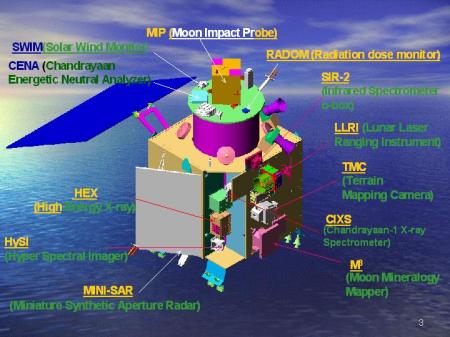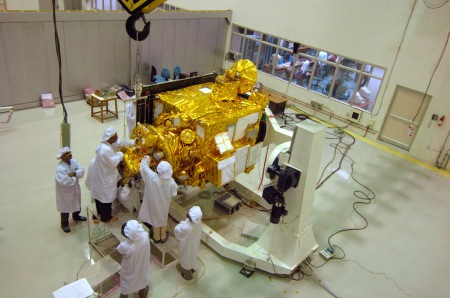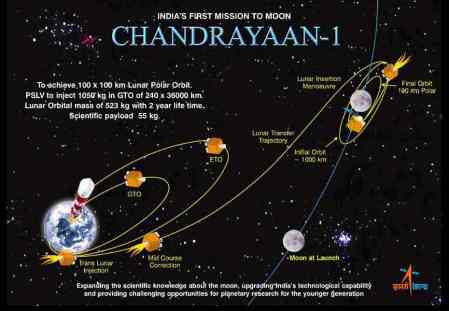
Courtesy: ISRO, India
It looks as if the dream come true, the Chandrayaan-1 mission is India’s first lunar spacecraft, which was announced by Ex Prime Minister Mr. Atal Bihari Vajpayee on Indian Independence Day, August 15, 2003. He said “Our country is now ready to fly high in the field of science. I am pleased to announce that India will send her own spacecraft to the moon by 2008. It is being named Chandrayaan-1“. Chandrayaan (an ancient Sanskrit word) means “Moon Craft”. The maiden journey of the moon probe is expected to be on 22 October 2008. According to astrologers also, this auspicious date is good for the mission.

The Main Objectives are :
- To expand scientific knowledge about the moon.
- To upgrade India’s technological capability.
- To provide challenging opportunities for planetary.
Chandrayaan-1 aims to achieve these well defined objectives through high resolution remote sensing of the moon in the visible, near infrared, microwave and X-ray regions of the electromagnetic spectrum. With this, preparation of a 3-dimensional atlas of the lunar surface and chemical mapping of entire lunar surface is envisaged.

Chandrayaan-1 consists of 5 Indian payloads :
- Terrain Mapping Camera (TMC)
- Hyperspectral Imager (HySI)
- Lunar Laser Ranging Instrument (LLRI)
- High Energy X-ray Spectrometer (HEX)
- Moon Impact Probe (MIP)
It also consists of six abroad payloads :
- Chandrayaan-1 Imaging X-ray Spectrometer (C1XS) – by Rutherford Appleton Laboratory of England and ISRO Satellite Centre, Bangalore.
- Smart Near Infrared Spectrometer (SIR-2) – by Max Plank Institute of Germany.
- Sub keV Atom Reflecting Analyser (SARA) – by Swedish Institute of Space Physics and Space Physics Laboratory (SPL) of ISRO’s Vikram Sarabhai Space Centre built its processing electronics.
- Radiation Dose Monitor (RADOM) – by Bulgarian Academy of Sciences.
- Mini Syntheic Aperture Radar (MiniSAR) – by Johns Hopkins University’s Applied Physics Laboratory and Naval Air Warfare Centre, USA through NASA.
- Moon Mineralogy Mapper (M3) – by Brown University and Jet Propulsion Laboratory through NASA.

The Trajectory of Chandrayaan …
The launch of Chandrayaan

0 comments:
Post a Comment